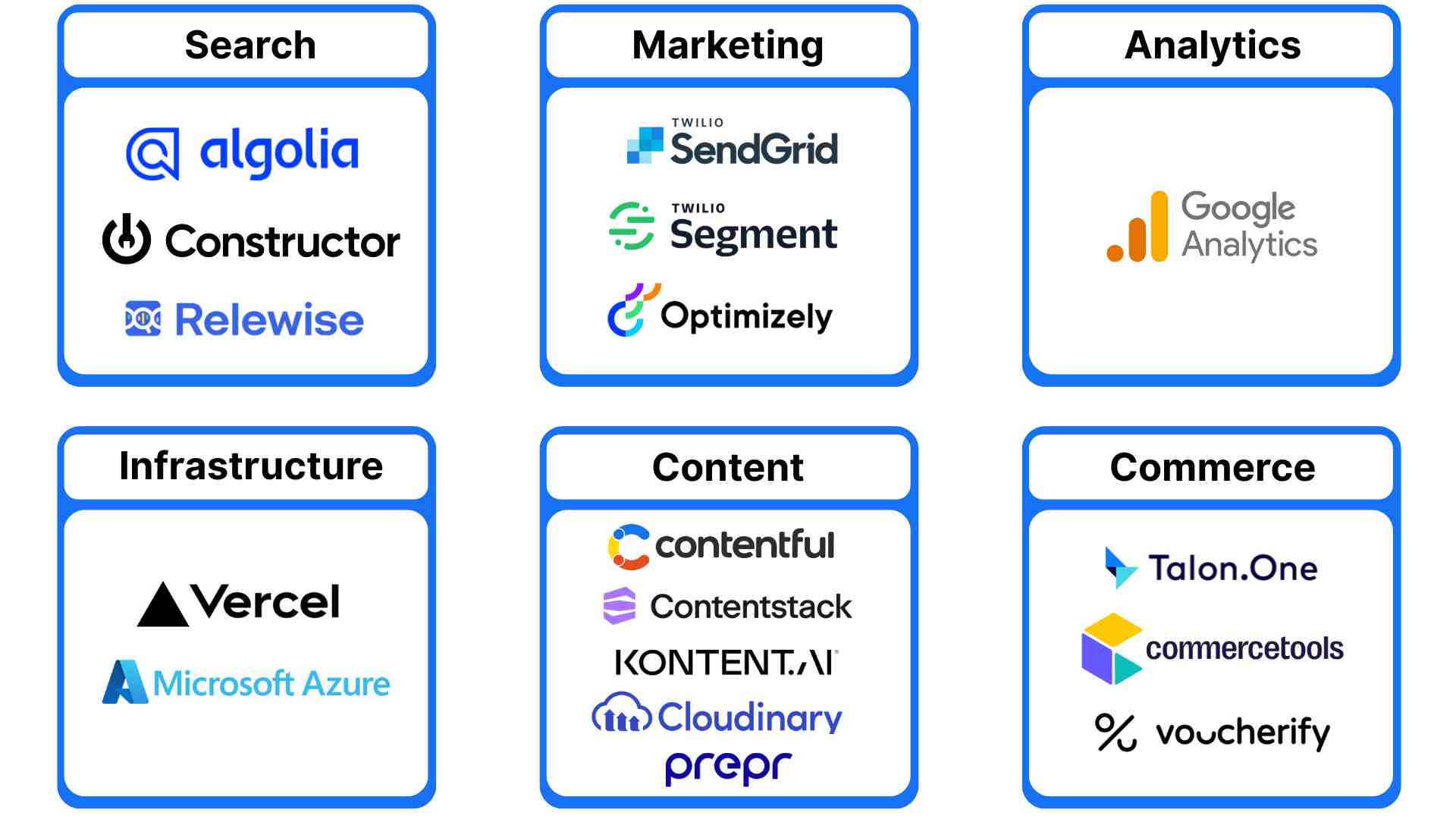In the article "What is Composable Commerce?" we briefly discussed the benefits of Composable Commerce: this form of MACH architecture offers flexibility, scalability, limited vendor lock-in, and incredibly fast performance. This can make it a very worthwhile transition.
Are you considering switching to a Composable Commerce architecture? The four steps below will help you facilitate the adoption of Composable Commerce in your organization.
Start with a thorough investigation of the problems your company is experiencing. You don't need to know exactly where the problem originates, but first figure out what exactly is going wrong. Below, we've listed a few sample questions you could ask yourself to identify where you're experiencing problems:
Once you know what problem(s) you're experiencing, we can start looking for a solution. A Composable Commerce project is always harder to generalize than other projects, as they depend heavily on your needs and requirements.
Switching to Composable Commerce not only changes your technology but also your company's mindset. For a successful transition, it's crucial that everyone in your organization is involved and can provide input.
The transformation to a modular architecture goes far beyond just the IT department. Consider, for example, the way your content editors will communicate with your customers; instead of posting content on individual web pages, they will now use a central content hub. This transition often feels like a major change.
Involve your employees in the transition, tell them what to expect, and give them time to prepare for the new processes. This way, your employees will be prepared for the transition and the impact will be less. By tackling this project together as a whole company, you'll make it a success.
For example, consider:
This step in the process actually comes later on, but it's helpful to consider it early on: be aware that your employees will need to be trained in the new ways of working. Switching to a Composable platform often means your employees will have to work with new tools and dashboards, so make sure they know how to use them. If you're working with an implementation partner, you can expect them to help you learn to work with the new tools. Check if they'll arrange tool demos for you, or if they can train you themselves.

At Aviva Solutions, we enjoy working with various vendors. We're always happy to guide you through the use of a new tool. Would you like to discuss one of these solutions, or perhaps need help finding the right one for you? Let us know!
Make sure everyone has the right training and resources to work with the new tools. If the necessary knowledge is only available to a small group within your organization, collaboration will be difficult, and you may overlook challenges.
A Composable platform generally offers much more flexibility in choosing the pace of your migration than other platforms. You might want to migrate everything at once, but that's not necessary. You can make it a gradual process: first choose one functionality and migrate it. Build experience, build trust, and then migrate the next functionality. This way, you stay in control of the process, can easily adjust at any time, and determine the migration pace yourself. Moreover, such a gradual approach ensures minimal disruption to your daily processes and minimizes your risk.
Which systems you should migrate first really depends entirely on your own situation (which brings us back to the beginning: doing your homework is crucial!). Consider which services you use, which are important to you, and what your strategic choices are. Therefore, time estimates are very difficult to generalize, so contact a partner to discuss your specific situation.
For example: Are your products not being found? Improve your Product Lister Page by integrating a new Search & Merchandising service without disrupting another webpage.
Migrating everything at once is also possible, but this has a greater impact. Sometimes an existing system has become so complex that it's difficult to migrate it in parts. Or you might want to use the transition to completely rebuild your current architecture. Therefore, carefully consider your current situation and which migration method suits you best. An experienced implementation partner can help you with this. They can create schedules for you, guide the process, and handle the technical work.
Are you unsure if your problem can be solved with a Composable solution, or are you having trouble estimating which features you could convert? We're here to help. We can guide you through the process from start to finish.
The smallest changes have massive impact.
Continue readingWhat to expect from your Composable Commerce trajectory.
Continue readingWant to stay informed about everything happening with Composable Commerce? Sign up for our updates here!
We've built converting e-commerce platforms for our customers for more than 15 years.
You don't just pick a new e-commerce platform. Especially with the sheer volume of available vendors and services. What's the best course of action? Together we will determinate the technical solution that best fits your business goals. Do you want to know how we approach e-commerce projects? We'd love to start a conversation!
Get the right insights!E-Commerce Solutions Specialist
Digital Experience Expert